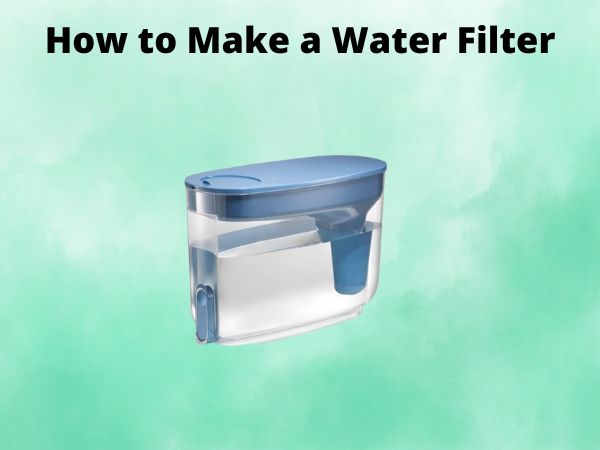How to Disconnect Water Line from Refrigerator [Safely]
Have you ever thought about how to break up with a water line without causing unnecessary drama? Adjusting the plumbing behind your fridge can feel like walking a tightrope. One false move, and you might flood your kitchen! Let’s dive into the process of safely disconnecting the water line from your refrigerator.
Table of Contents
Why Would You Need to Disconnect the Water Line?
Before jumping into action, let’s take a moment to reflect. Why exactly do you need to disconnect the water line? Perhaps you’re relocating your fridge, upgrading to a snazzier model, or maybe you’re just addressing a pesky water leak. Identifying your reason is like finding the North Star—it will guide your entire operation.
Essential Tools You Will Need
A Handy Checklist
Imagine showing up to a sword fight with a spoon. Similarly, tackling this project without the right tools could spell disaster. Make sure you have the following:
- Adjustable wrench
- Bucket or towel
- Philips head screwdriver
- Pair of pliers
- Safety gloves
Important Safety Precautions
Safety shouldn’t be an afterthought—it’s your best companion in this adventurous journey. Here are some crucial steps to stay safe:
- Power Down: Unplug your refrigerator to prevent electric shock.
- Turn Off the Water Supply: Ensure no water pressure by shutting off the valve.
- Wear Protective Gear: Use gloves to shield your hands from potential injuries.
Step-by-Step Guide to Disconnecting
1. Locate the Water Supply Valve
The supply valve is like the portal to a parallel universe. Usually, it’s somewhere behind the fridge or underneath the sink. Turn it clockwise to shut it off completely.
2. Disconnect the Power
Unplug the refrigerator. It’s as simple as taking your phone off the charger. No electricity should be flowing into the device while you’re working on it.
3. Move the Refrigerator
Gently pull the fridge away from the wall. It’s akin to gently pushing a shopping cart, careful not to tip anything over.
4. Place a Bucket or Towel
Unexpected water spills can be as unwelcome as a surprise thunderstorm. Place a bucket or towel to catch any escaping water.
5. Disconnect the Water Line
Using an adjustable wrench, loosen the nut connecting the water line. It’s like unscrewing the lid of a stubborn pickle jar—go slowly and steadily.
6. Remove Any Clips or Fasteners
Use your Philips head screwdriver to remove any fittings or clips holding the line in place.
7. Fully Detach the Line
Firmly but gently, pull the line from the connection point. If there’s resistance, check for overlooked screws or attachments.
Common Mistakes to Avoid
Navigating this process is more treacherous with common pitfalls. Here’s how to steer clear:
- Skipping Safety Gear: Don’t underestimate the potential for minor injuries.
- Leaving the Water Supply On: Forgetting this step is like forgetting to take the lid off before pouring.
- Forced Movements: Forced disconnections can cause damage to the valve or the line.
Maintenance Tips After Disconnecting
Think of your fridge as a pet. It requires regular care and attention. After disconnecting, give it a once-over to ensure all is as it should be:
- Inspect for any leaks.
- Check hose and valve condition.
- Clean the area around the fridge.
When to Call a Professional
Sometimes, despite our best efforts, things spiral out of control. If you’re facing daunting issues or suspect damage, it might be time to wave the white flag and call an expert.
Conclusion
Tackling the task of disconnecting a water line from your refrigerator doesn’t have to be as daunting as wrestling a greased pig. By following this guide, you can smoothly navigate the disconnection process, ensuring your kitchen stays dry and happy. Remember, safety is paramount, and if things get too complicated, calling a professional is the best course of action. Now, aren’t you glad you know how to break up with that water line?
FAQs
What Should I Do If My Water Line Is Leaking After I Disconnect It?
First, check if the valve is tightly closed. If it’s a minor leak, you can attempt to secure any loose connections. If the problem persists, consider professional assistance.
Can I Reconnect the Water Line Myself Later On?
Yes, reconnecting can be done safely if you follow steps backward and ensure all connections are secure. Always test for leaks before finishing up.
Do All Refrigerators Have a Water Line?
No, only refrigerators with water dispensers or ice makers have a water line. Check your model’s specifications for details.
How Often Should I Replace My Refrigerator Water Line?
It’s advised to replace your water line every 5-8 years to prevent leaks and maintain water quality.
Is It Normal for Water To Spill During Disconnection?
A small amount of water spillage is normal. However, excessive water indicates the supply might not be fully shut off.


